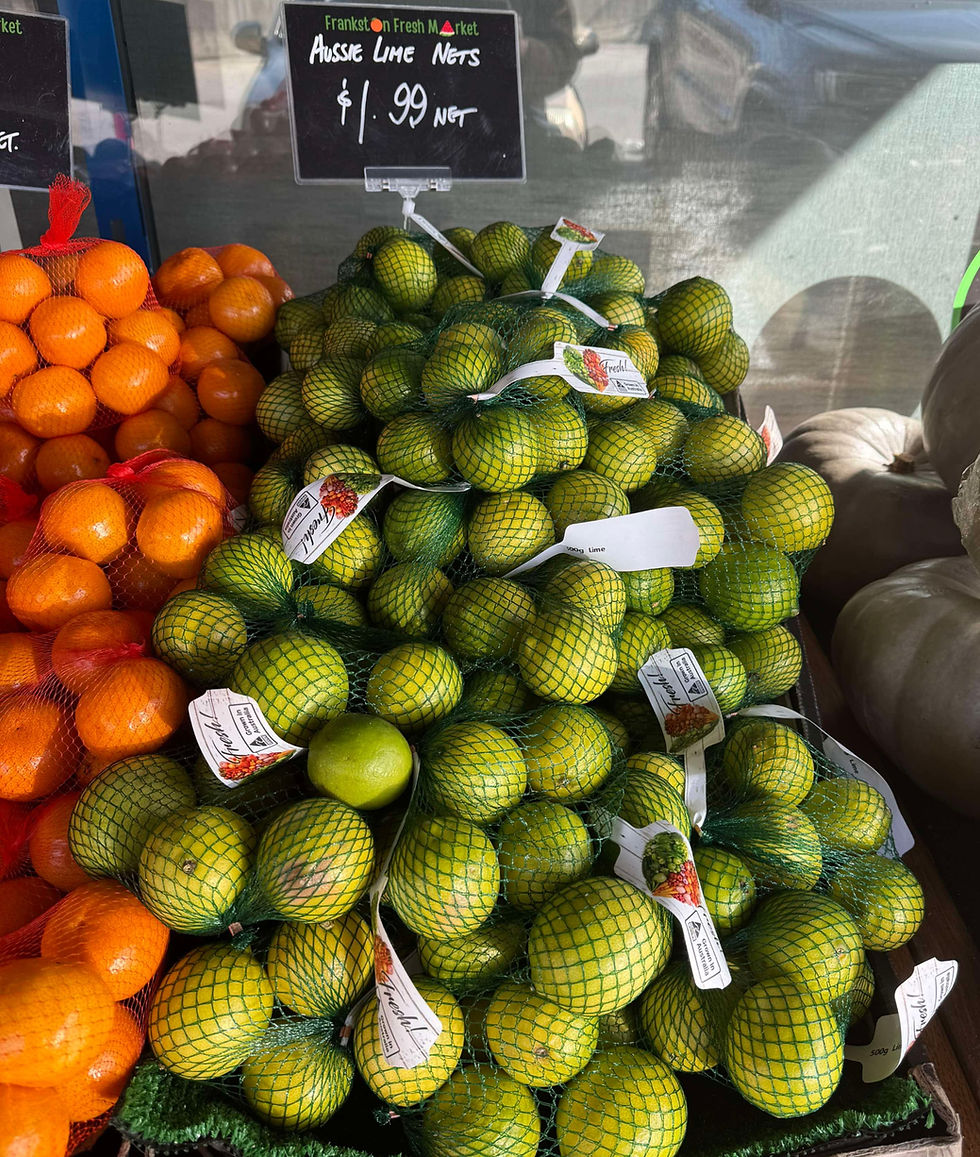A Quarter-Century Between Batches: My Lime Marmalade Experiment
- hello454367
- Aug 14
- 3 min read

Now that entries for the 2025 Australian Marmalade Awards are open, we’d like to share this informative (and slightly zesty) piece sent to us by Matthew Salas. It’s a reminder that sometimes, the best marmalade is the one you patiently perfect over decades — and that a kitchen experiment can be just as much about curiosity as it is about citrus. Thank you Matthew!
By Matthew Salas
When a bag of seven glossy, fragrant limes appears in the supermarket for just 99 cents (about 14 cents a lime), there’s only one sensible response: reach for the big pot and start sterilising jars.
The last time I saw such a bargain was in 1997 — and, believe it or not, my supply from that year only ran out in 2023. I hadn’t made vast quantities, but the marmalade was so fruit-heavy and flavour-packed that only I (the mother) truly adored it. The final jar, opened 25 years later, was still as bright and delicious as the day it was made.
This time, I decided to document the experiment properly — two batches, one fruit, two sugar levels, and some interesting learnings along the way.
Batch 1
Fruit: 1.5kg limes (about 21)
Sugar: 1.1kg
Pectin: 100g (two 50g packets)
Other: ½ tsp bicarbonate soda, squeeze of lemon juice, ~1.5–2 litres water
Output: ~2 litres of marmalade
A rich, tangy set with a sherbet-like sparkle, though not as dark or intense as the 1997 vintage.
Batch 2
Fruit: 1.5kg limes (same amount as Batch 1)
Sugar: 1.9kg
Pectin: 100g
Other: ½ tsp bicarbonate soda, ~2 litres water (including 500ml used to rinse peel)
Output: ~3.4 litres of marmalade
Lighter, milder, but equally delicious — and a fascinating example of how more sugar means more liquid can be set to jam, even with the same fruit quantity.
The Method (for both batches)
The process began with quartering limes, soaking overnight with bicarbonate soda (to reduce sourness and aid set), simmering until skins softened, and removing pulp for juicing. The peels — which can contribute bitterness — were mostly discarded, with a few slivers reserved for texture. Sugar was dissolved slowly, pectin added, and the mixture boiled vigorously until the set test on a cold saucer was passed.
A Few Learnings
Acidity matters: Limes can be too acidic for ideal set; a pinch of bicarbonate soda helps.
Pectin needs care: Too much boiling after adding pectin can destroy it.
Sugar ratios matter: Batch 2 proved that upping sugar can yield significantly more marmalade without over-sweetness.
Patience pays: The 1997 batch lasted 25 years in perfect condition — proof that a well-made marmalade is a long-term investment in deliciousness.
Could This Win a Medal?
With its high fruit content, vibrant tang, and beautiful set, I can’t help but wonder how my lime marmalade would fare with the judges at the Australian Marmalade Awards.
If you’ve been experimenting in your own kitchen — whether with classic Seville orange or something more adventurous like lime — now’s your moment.
Entries for the 2025 Australian Marmalade Awards are now open! Home cooks and artisan makers alike are invited to enter.
📅 Entries close: 26 September 2025📍 Awards presentations: Birregurra VIC, 25 October 2025
Enter now via our website and see if your marmalade can take home gold!

Images provided by Matthew Salas.






Comments